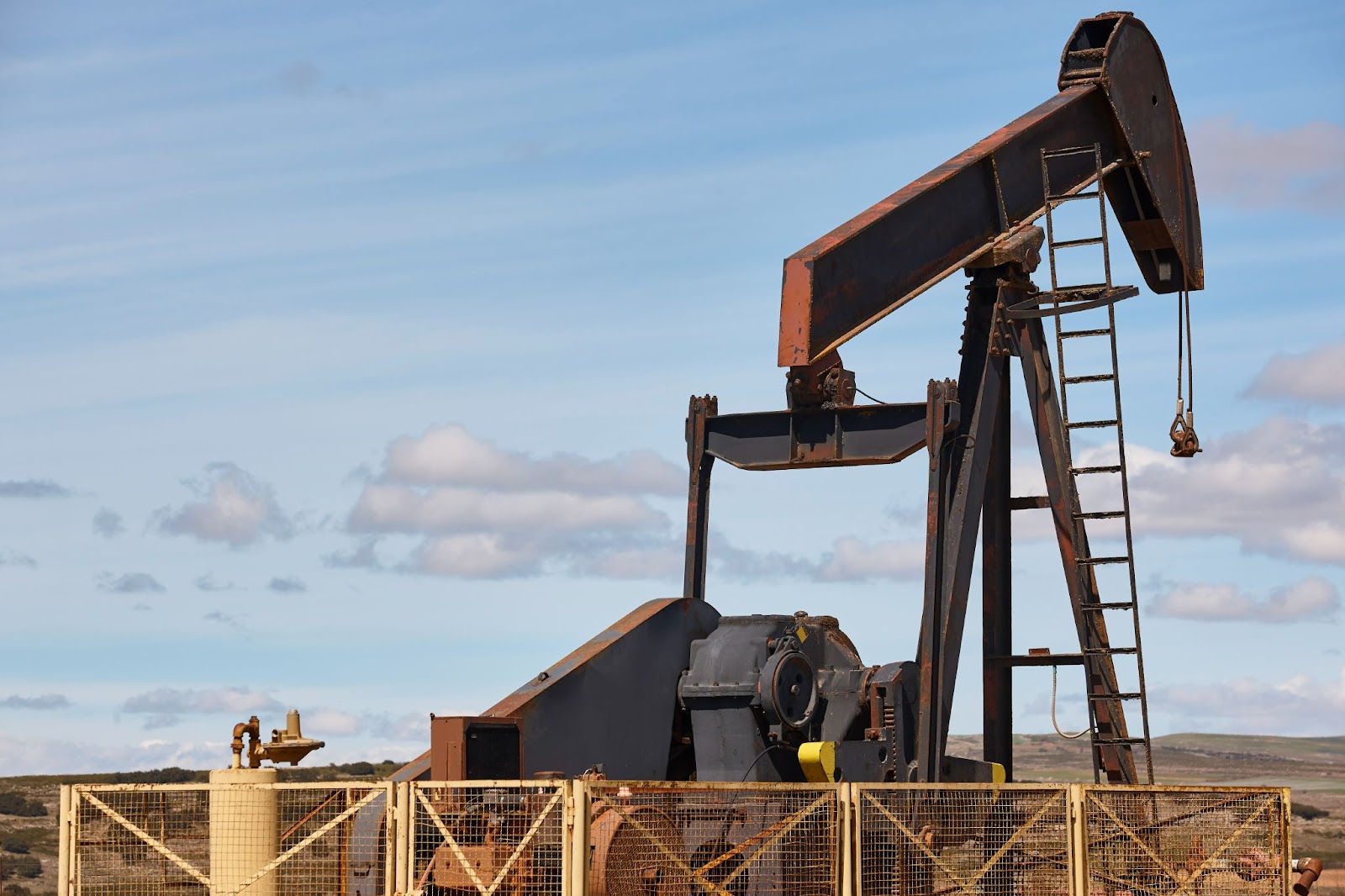For owners of mineral rights in Texas and across the United States, few factors influence the value of their assets more directly than global oil prices. From geopolitical tensions to OPEC decisions, technological innovations to pandemic-related demand shifts, the forces that drive oil price movements ripple through the mineral rights market with significant consequences. At Paint Rock Royalty, we help mineral owners understand these complex relationships and navigate the resulting market fluctuations.
Many mineral owners underestimate just how closely their asset values track with global commodity prices. Whether you’re considering selling mineral rights or holding for long-term production, understanding the connection between international oil markets and your mineral interest valuation is essential for making informed financial decisions.
How Oil Prices Impact Mineral Rights Values
The value of mineral rights is fundamentally tied to the revenue-generating potential of the underlying resources. This connection works through several direct mechanisms:
-
- Royalty Revenue Calculations: Royalty payments are typically calculated as a percentage of production value, which is directly determined by commodity prices.
-
- Production Decisions: Operators make drilling and completion decisions based on expected returns, which depend heavily on current and projected oil prices.
-
- Acquisition Interest: When oil prices rise, companies expand acquisition budgets and compete more aggressively for mineral rights.
-
- Valuation Multiples: Buyers typically value mineral rights using multiples of current or projected cash flow, which expands during high-price environments.
The Magnitude of Price Impacts
The degree to which oil price movements affect your specific mineral rights depends on several factors:
| Asset Characteristic | Price Sensitivity | Impact Example |
| Producing vs. Non-Producing | Producing assets show immediate value changes; non-producing react more to long-term price outlooks | A $10/bbl price increase might immediately raise producing asset values 15-25% while non-producing might see 5-15% increases |
| Oil vs. Gas Weighted | Oil-weighted properties typically experience more volatility than gas-weighted assets | Oil-weighted properties might see 2x the valuation volatility of gas-weighted properties during price swings |
| Development Stage | Proven developed assets show more immediate price reactions than undrilled acreage | PDP (Proved Developed Producing) assets might see 80-90% of theoretical value changes while undeveloped might see 40-60% |
| Basin/Region | Areas with higher breakeven costs show more dramatic valuation swings | High-cost basin values might double when prices rise from $50 to $80, while low-cost basin values might increase 30-50% |
Global Factors That Drive Oil Price Movements
Understanding the key influences on global oil prices helps mineral owners anticipate potential value changes:
1. Supply-Side Factors
OPEC+ Production Decisions: The Organization of Petroleum Exporting Countries and its allies control roughly 40% of global oil production. Their coordinated production decisions can significantly impact global supply and prices.
Geopolitical Disruptions: Conflicts, sanctions, and political instability in major producing regions can rapidly remove supply from global markets, driving prices upward.
U.S. Shale Production Response: American shale producers now act as swing producers, rapidly adjusting output in response to price signals, which can moderate extreme price movements.
2. Demand-Side Factors
Global Economic Growth: Economic expansion, particularly in developing economies, drives increased oil consumption and supports higher prices.
Energy Transition Policies: Government policies promoting renewable energy and electric vehicles impact long-term oil demand forecasts and investment decisions.
Seasonal Patterns: Predictable seasonal demand patterns, such as summer driving season and winter heating needs, create cyclical price movements.
3. Financial Market Factors
Currency Fluctuations: As oil is priced in U.S. dollars, changes in currency values impact effective prices for international buyers and sellers.
Speculative Trading: Futures market speculation can amplify price movements beyond what physical supply-demand fundamentals might suggest.
Investment Flows: Broad capital movements between asset classes can drive money into or out of commodity markets, affecting prices.
Case Study: Recent Oil Price Movements and Mineral Rights Valuations
The past few years have demonstrated the dramatic impact of price volatility on mineral rights values:
2020 Crash: When COVID-19 lockdowns caused prices to plummet (with WTI briefly trading negative), mineral rights acquisitions nearly froze, and values dropped 30-70% depending on asset characteristics.
2021-2022 Recovery: As prices rebounded to $70-80/bbl range, mineral rights values in core areas recovered and in some cases exceeded pre-pandemic levels due to renewed acquisition competition.
2023-2025 Fluctuations: Recent price movements have created windows of opportunity for both buyers and sellers as markets react to global events.
Real-World Value Impact Example
For a hypothetical 1% royalty interest in a moderately productive Texas well:
| Oil Price Scenario | Monthly Production | Monthly Revenue | Valuation Range (at 60-84x monthly) |
| $50/bbl | 200 bbls | $1,000 | $60,000 – $84,000 |
| $75/bbl | 200 bbls | $1,500 | $90,000 – $126,000 |
| $100/bbl | 200 bbls | $2,000 | $120,000 – $168,000 |
This example demonstrates how a 50% price increase from $50 to $75 can produce a corresponding 50% increase in asset value, while higher prices might expand valuation multiples further.
Strategies for Mineral Owners in Different Price Environments
During High Price Periods
When oil prices are elevated, consider these approaches:
-
- Evaluate Selling Opportunities: High price environments often represent optimal selling windows, particularly for assets in less premium areas or with uncertain future development. The value of mineral rights in Texas and other regions typically peaks during these periods.
-
- Negotiate Better Lease Terms: If leasing rather than selling, use the favorable environment to secure higher royalty percentages and better lease provisions.
-
- Consider Partial Sales: Selling a portion of your interests can lock in high valuations while maintaining exposure to potential further upside.
During Low or Moderate Price Periods
In less favorable price environments:
-
- Focus on Premium Locations: Mineral rights value in Texas and other regions varies by location. Core areas in premier basins maintain better values during downturns than marginal areas.
-
- Understand Development Timelines: If development is years away, even during low prices, the relevant price outlook is future expectations, not current market conditions.
-
- Consider Tax Advantages: Low-price environments might create opportunities for tax-advantaged estate planning through discounted valuations for family transfers.
Regardless of Price Environment
Some strategies make sense in any market:
-
- Focus on Operator Quality: Properties developed by well-capitalized, efficient operators better withstand price volatility.
-
- Understand Your Break-Even Economics: Know the price threshold at which development of your property becomes economic.
-
- Stay Informed About Local Activity: Regional development often proceeds even during moderate price environments if local economics remain favorable.
Takeaways
The value of your mineral rights is inextricably linked to global oil prices, but the relationship is nuanced and varies based on your specific asset characteristics. While price fluctuations create both opportunities and challenges, informed mineral owners can make strategic decisions by understanding these connections.
Rather than trying to perfectly time the market—an almost impossible task—focus on your personal financial goals, the quality of your specific assets, and the long-term development outlook for your region. By balancing these factors with an understanding of how price movements impact valuations, you can make confident decisions about when to hold, lease, or sell your valuable mineral rights.
Whether you’re considering selling mineral rights during the current price environment or evaluating mineral rights for sale as a potential buyer, Paint Rock Royalty provides the market intelligence and valuation expertise needed to navigate these complex decisions.
Frequently Asked Questions
How quickly do mineral rights values respond to oil price changes?
Producing mineral rights values typically adjust within weeks of significant price movements, while non-producing acreage may lag by months as buyers reassess development economics under new price scenarios.
Do gas and oil prices always move together?
No, natural gas and oil prices often move independently based on their own supply-demand fundamentals. If your minerals produce both oil and natural gas, the commodity mix affects how overall price movements impact your asset value.
Should I always sell my mineral rights during price spikes?
Not necessarily. While high prices often create favorable selling conditions, other factors including development stage, operator quality, and your personal financial situation should influence the decision. Long-term holders with quality assets in core areas may benefit from holding through price cycles.
How do mineral rights brokers in Texas account for price volatility when advising clients?
Professional mineral rights brokers typically analyze longer-term price trends rather than short-term fluctuations, consider operator development plans that may proceed regardless of temporary price movements, and help clients understand the risk-reward profile of selling versus holding in different price environments.
Can I hedge against oil price movements while retaining my mineral rights?
While direct hedging is challenging for most individual mineral owners, some strategies like partial sales, overriding royalty structures with minimum payment provisions, or investing in energy sector opportunities with negative correlation to your specific holdings can provide some protection against adverse price movements.




